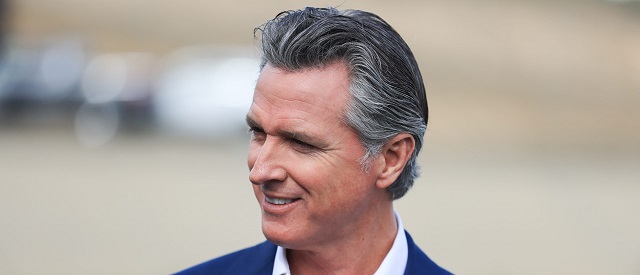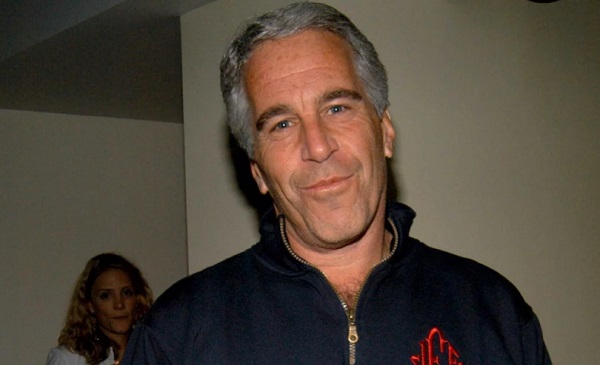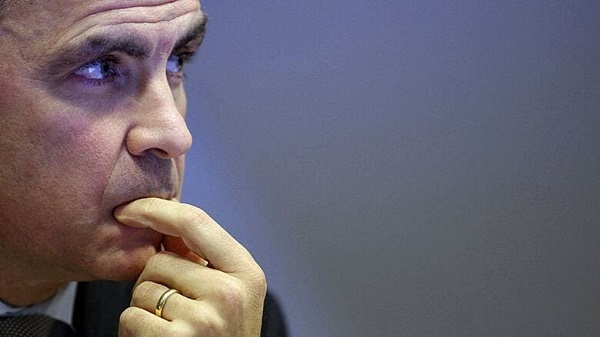Daily Caller
‘A Tough Place To Do Business’: Chevron Exec Details Company’s Decision To Move HQ Out Of California

 From the Daily Caller News Foundation
From the Daily Caller News Foundation
By Nick Pope
A top Chevron executive detailed his company’s decision to move its headquarters out of California in a Thursday roundtable with reporters.
Andy Walz, president of Chevron Americas products, said that California’s crusade against conventional energy producers played a role in the company’s decision to move its headquarters to Texas. Measures like California’s 2035 ban on internal combustion engine vehicles and its emissions cap-and-trade rules were specific headwinds that played a role in the company’s decision to move its headquarters to Houston, Walz said.
“It is a difficult place to do business. It’s a difficult place to be headquartered. And we finally said, ‘Hey, that’s enough. We’ve got critical mass, we’re gonna move.’ We’re also going to improve our performance by getting everybody in the same location,” Walz explained.
Walz made clear that part of the reason for Chevron’s headquarters relocation is that parts of its operations and senior leadership have already been stationed in Texas, and that the company believes its performance can improve if employees and executives are in the same place. The company is not walking away from its assets in California, andChevron plans to continue operating them into the future, Walz said.
“California is a tough place to do business. It’s a tough place to recruit people. It’s a tough place to move employees. A lot of our employees move up through the company, they gain experiences in different geographies, different locations, and we have a lot of people that will not move to California. That makes it difficult,” Walz said. “California is a tough place to have a big employee base. It’s tough, its cost of living is expensive, and we were not able to get employees that didn’t live there to move there. And that’s not sustainable for us, to be honest.”
California has the third-highest cost of living of all states, trailing only Hawaii and Massachusetts, Forbes Magazine assessed in July. Overall, California has seen net outflows of population in recent years, with more than 800,000 people moving out of the state in 2022 alone, according to Forbes.
Additionally, more than 350 companies moved their headquarters out of the state between 2018 and 2022, according to Forbes.
“California has said, ‘Hey, you cannot buy a new car that has an internal combustion engine in it after 2035.’ So, that’s a headwind against investing in a refinery. On the books, they have a windfall profits tax or penalty, they’re evaluating how to deal with that, they want to cap the amount of profits you can make in your refinery. That is a headwind for anybody that would want to put money into it to try to get a return on their investment,” Walz said. “And the third thing that maybe is even a bit more crippling is this: they have a program called cap and trade, where they tax your CO2 emissions in the state of California. And that tax continues to go up every year, and it gets more burdensome every single year. So those three regulations, those three policies, really make it hard for me to want to put more capital into the state of California. Therefore, I think the business case there is really challenging.”
“Our competitors are looking at the exact same equation I’m looking at, and our money is going other places, and California can’t get supplied from Houston,” Walz said. “It doesn’t work.”
The Environmental Protection Agency’s (EPA) recently-finalized tailpipe emissions standards for light- and medium-duty vehicles — which have been characterized by critics as an “EV mandate” — are another policy that Walz believes will have “consequences” if implemented.
Walz’s comments on the business environment in California echo Chevron CEO Mike Wirth’s recent remarks to The Wall Street Journal, in which he said that “California has a number of policies that raise costs, that hurt consumers.”
As news of Chevron’s headquarters relocation broke earlier in August, the office of Democratic California Gov. Gavin Newsom told the Daily Caller News Foundation that the company’s decision was the “logical culmination of a long process that has repeatedly been foreshadowed by Chevron.”
Crime
‘We’re Going To Lose’: Steve Bannon Warns Withholding Epstein Files Would Doom GOP


From the Daily Caller News Foundation
By Jason Cohen
Former White House adviser Steve Bannon warned on Friday that Republicans would suffer major losses if President Donald Trump’s administration does not move to release documents related to deceased pedophile Jeffrey Epstein’s crimes and associations.
Axios reported on Sunday that a two-page memo showed the Department Of Justice (DOJ) and FBI found no evidence Epstein kept a “client list” or was murdered, but public doubts have continued. Bannon said on “Bannon’s War Room” that failure to release information would lead to the dissipation of one-tenth of the Make America Great Again (MAGA) movement and significant losses for the Republican Party in the 2026 midterms and the 2028 presidential election.
Dear Readers:
As a nonprofit, we are dependent on the generosity of our readers.
Please consider making a small donation of any amount here.
Thank you!
“It’s not about just a pedophile ring and all that, it’s about who governs us, right? And that’s why it’s not going to go away … For this to go away, you’re going to lose 10% of the MAGA movement,” Bannon said. “If we lose 10% of the MAGA movement right now, we’re going to lose 40 seats in ’26, we’re going to lose the [presidency]. They don’t even have to steal it, which they’re going to try to do in ’28, because they’re going to sit there and they go, ‘They’ve disheartened the hardest-core populist nationalists’ — that’s always been who governs us.”
Bannon also demanded the publication of all the Epstein documents on “Bannon’s War Room” Thursday. He called on the DOJ to go to court and push for the release of the documents or for Trump to appoint a special counsel to manage the publication.
Epstein was arrested in 2019 and charged with sex trafficking. Shortly after, he was found dead in his New York Metropolitan Correctional Center cell shortly after. Officials asserted that he hanged himself in his cell.
However, Epstein’s death has sparked years of theories because of the malfunctioning of prison cameras, along with guards admitting to falsifying documents about checking on the then-inmate. The DOJ inspector general later confirmed that multiple surveillance cameras outside of his cell were inoperable, while others captured the common area outside his door.
Both Bannon and Daily Caller News Foundation co-founder Tucker Carlson have speculated that Epstein had connections to intelligence agencies.
Former Labor Secretary Alex Acosta allegedly indicated that Epstein was tied to intelligence, according to Vicky Ward in The Daily Beast.
Business
UN’s ‘Plastics Treaty’ Sports A Junk Science Wrapper


From the Daily Caller News Foundation
By Craig Rucker
According to a study in Science Advances, over 90% of ocean plastic comes from just 10 rivers, eight of which are in Asia. The United States, by contrast, contributes less than 1%. Yet Pew treats all nations as equally responsible, promoting one-size-fits-all policies that fail to address the real source of the issue.
Just as people were beginning to breathe a sigh of relief thanks to the Trump administration’s rollback of onerous climate policies, the United Nations is set to finalize a legally binding Global Plastics Treaty by the end of the year that will impose new regulations, and, ultimately higher costs, on one of the world’s most widely used products.
Plastics – derived from petroleum – are found in everything from water bottles, tea bags, and food packaging to syringes, IV tubes, prosthetics, and underground water pipes. In justifying the goal of its treaty to regulate “the entire life cycle of plastic – from upstream production to downstream waste,” the U.N. has put a bull’s eye on plastic waste. “An estimated 18 to 20 percent of global plastic waste ends up in the ocean,” the UN says.
As delegates from over 170 countries prepare for the final round of negotiations in Geneva next month, debate is intensifying over the future of plastic production, regulation, and innovation. With proposals ranging from sweeping bans on single-use plastics to caps on virgin plastic output, policymakers are increasingly citing the 2020 Pew Charitable Trusts report, Breaking the Plastic Wave, as one of the primary justifications.
But many of the dire warnings made in this report, if scrutinized, ring as hollow as an empty PET soda bottle. Indeed, a closer look reveals Pew’s report is less a roadmap to progress than a glossy piece of junk science propaganda—built on false assumptions and misguided solutions.
Pew’s core claim is dire: without urgent global action, plastic entering the oceans will triple by 2040. But this alarmist forecast glosses over a fundamental fact—plastic pollution is not a global problem in equal measure. According to a study in Science Advances, over 90% of ocean plastic comes from just 10 rivers, eight of which are in Asia. The United States, by contrast, contributes less than 1%. Yet Pew treats all nations as equally responsible, promoting one-size-fits-all policies that fail to address the real source of the issue.
This blind spot has serious consequences. Pew’s solutions—cutting plastic production, phasing out single-use items, and implementing rigid global regulations—miss the mark entirely. Banning straws in the U.S. or taxing packaging in Europe won’t stop waste from being dumped into rivers in countries with little or no waste infrastructure. Policies targeting Western consumption don’t solve the problem—they simply shift it or, worse, stifle useful innovation.
The real tragedy isn’t plastic itself, but the mismanagement of plastic waste—and the regulatory stranglehold that blocks better solutions. In many countries, recycling is a government-run monopoly with little incentive to innovate. Meanwhile, private-sector entrepreneurs working on advanced recycling, biodegradable materials, and AI-powered sorting systems face burdensome red tape and market distortion.
Pew pays lip service to innovation but ultimately favors centralized planning and control. That’s a mistake. Time and again, it’s been technology—not top-down mandates—that has delivered environmental breakthroughs.
What the world needs is not another top-down, bureaucratic report like Pew’s, but an open dialogue among experts, entrepreneurs, and the public where new ideas can flourish. Imagine small-scale pyrolysis units that convert waste into fuel in remote villages, or decentralized recycling centers that empower informal waste collectors. These ideas are already in development—but they’re being sidelined by policymakers fixated on bans and quotas.
Worse still, efforts to demonize plastic often ignore its benefits. Plastic is lightweight, durable, and often more environmentally efficient than alternatives like glass or aluminum. The problem isn’t the material—it’s how it has been managed after its use. That’s a “systems” failure, not a material flaw.
Breaking the Plastic Wave champions a top-down, bureaucratic vision that limits choice, discourages private innovation, and rewards entrenched interests under the guise of environmentalism. Many of the groups calling for bans are also lobbying for subsidies and regulatory frameworks that benefit their own agendas—while pushing out disruptive newcomers.
With the UN expected to finalize the treaty by early 2026, nations will have to face the question of ratification. Even if the Trump White House refuses to sign the treaty – which is likely – ordinary Americans could still feel the sting of this ill-advised scheme. Manufacturers of life-saving plastic medical devices, for example, are part of a network of global suppliers. Companies located in countries that ratify the treaty will have no choice but to pass the higher costs along, and Americans will not be spared.
Ultimately, the marketplace of ideas—not the offices of policy NGOs—will deliver the solutions we need. It’s time to break the wave of junk science—not ride it.
Craig Rucker is president of the Committee For A Constructive Tomorrow (www.CFACT.org).
-

 Business2 days ago
Business2 days ago103 Conflicts and Counting Unprecedented Ethics Web of Prime Minister Mark Carney
-

 illegal immigration1 day ago
illegal immigration1 day agoICE raids California pot farm, uncovers illegal aliens and child labor
-

 Uncategorized13 hours ago
Uncategorized13 hours agoCNN’s Shock Climate Polling Data Reinforces Trump’s Energy Agenda
-

 Opinion6 hours ago
Opinion6 hours agoPreston Manning: Three Wise Men from the East, Again
-

 Addictions5 hours ago
Addictions5 hours agoWhy B.C.’s new witnessed dosing guidelines are built to fail
-

 Business3 hours ago
Business3 hours agoCarney Liberals quietly award Pfizer, Moderna nearly $400 million for new COVID shot contracts
-

 Energy1 day ago
Energy1 day agoLNG Export Marks Beginning Of Canadian Energy Independence
-

 Business1 day ago
Business1 day agoCarney government should apply lessons from 1990s in spending review






